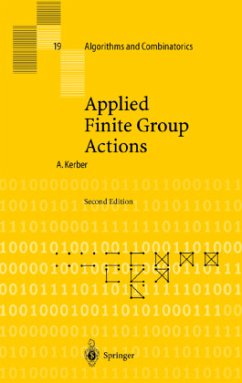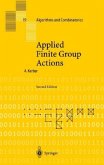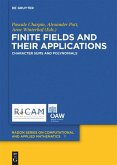Written by one of the top experts in the fields of combinatorics and representation theory, this book distinguishes itself from the existing literature by its applications-oriented point of view. The second edition is extended, placing more emphasis on applications to the constructive theory of finite structures. Recent progress in this field, in particular in design and coding theory, is described.
Also the present second edition of this book is an introduction to the theory of clas sification, enumeration, construction and generation of finite unlabeled structures in mathematics and sciences. Since the publication of the first edition in 1991 the constructive theory of un labeled finite structures has made remarkable progress. For example, the first- designs with moderate parameters were constructed, in Bayreuth, by the end of 1994 ([9]). The crucial steps were - the prescription of a suitable group of automorphisms, i. e. a stabilizer, and the corresponding use of Kramer-Mesner matrices, together with - an implementation of an improved version of the LLL-algorithm that allowed to find 0-1-solutions of a system of linear equations with the Kramer-Mesner matrix as its matrix of coefficients. of matrices of the The Kramer-Mesner matrices can be considered as submatrices form A" (see the chapter on group actions on posets, semigroups and lattices). They are associated with the action of the prescribed group G which is a permutation group on a set X of points induced on the power set of X. Hence the discovery of the first 7-designs with small parameters is due to an application of finite group actions. This method used by A. Betten, R. Laue, A. Wassermann and the present author is described in a section that was added to the manuscript of the first edi tion.
Also the present second edition of this book is an introduction to the theory of clas sification, enumeration, construction and generation of finite unlabeled structures in mathematics and sciences. Since the publication of the first edition in 1991 the constructive theory of un labeled finite structures has made remarkable progress. For example, the first- designs with moderate parameters were constructed, in Bayreuth, by the end of 1994 ([9]). The crucial steps were - the prescription of a suitable group of automorphisms, i. e. a stabilizer, and the corresponding use of Kramer-Mesner matrices, together with - an implementation of an improved version of the LLL-algorithm that allowed to find 0-1-solutions of a system of linear equations with the Kramer-Mesner matrix as its matrix of coefficients. of matrices of the The Kramer-Mesner matrices can be considered as submatrices form A" (see the chapter on group actions on posets, semigroups and lattices). They are associated with the action of the prescribed group G which is a permutation group on a set X of points induced on the power set of X. Hence the discovery of the first 7-designs with small parameters is due to an application of finite group actions. This method used by A. Betten, R. Laue, A. Wassermann and the present author is described in a section that was added to the manuscript of the first edi tion.








